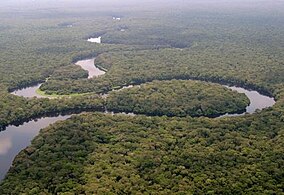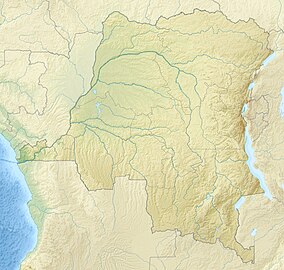Salonga National Park
| Salonga National Park | |
|---|---|
|
IUCN category II (national park)
|
|

View of a river in the Salonga National Park in 2005
|
|
| Location | Democratic Republic of the Congo |
| Coordinates | 2°0′0″S 21°00′0″E / 2.00000°S 21.00000°ECoordinates: 2°0′0″S 21°00′0″E / 2.00000°S 21.00000°E |
| Area | 36,000 km2 |
| Established | 1970 |
| Governing body | l'Institut Congolais pour la Conservation de la Nature (ICCN) |
| Type | Natural |
| Criteria | vii, x |
| Designated | 1984 (8th session) |
| Reference no. | 280 |
| State Party |
|
| Region | Africa |
| Endangered | 1999–present |
Salonga National Park is a national park in the Democratic Republic of the Congo located in the Congo River basin. It is Africa's largest tropical rainforest reserve covering about 36,000 km2 or 3,600,000 hectares (8,900,000 acres). It extends into the provinces of Bandundu, Equateur, Kasaï Occidental and Kasaï Oriental.
The park is in an area of pristine rainforest about halfway between Kinshasa, the capital, and Kisangani. There are no roads and most of the park is accessible only by river. The southern region inhabited by the Iyaelima people is accessible via the Lokoro River, which flows through the center and northern parts of the park, and the Lula River in the south.
The Salonga National Park was established as the Tshuapa National Park in 1956, and gained its present boundaries with a 1970 presidential decree by President Mobutu Sese Seko. It was registered as a UNESCO World Heritage Site in 1984. Due to the civil war in the eastern half of the country, it was added to the List of World Heritage in Danger in 1999.
The park structure is based on the American National Park model in which wilderness areas are cleared of their indigenous inhabitants. The World Wildlife Fund has been pressing to do the same with the Iyaelima, the last remaining residents of the park. The Iyaelima are hostile to the park, to the Institut Congolais pour la Conservation de la Nature personnel who manage it and to the park guards. They do not understand park laws, for example prohibiting trade in wild animals.
...
Wikipedia

